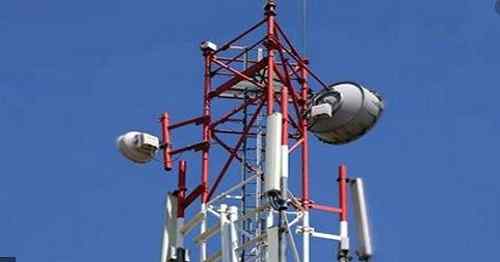Telecommunication Industry Analysis 2021
Aftab Ahmed
Islamabad: The telecommunication industry analysis 2021 depends on growth, regulatory environment. Pakistan is currently facing challenges on all these accounts in the IT industry.
Following the outbreak of the Covid-19 pandemic, online businesses have gone growth. But there are still challenge to internet outreach in Pakistan.
The customers have low outreach and face problems with internet connectivity. Pakistan has also lost its position in the index of telecommunication industry analysis in 2021.
The Economist Intelligence Unit has recently released an inclusive internet index. The 2021 index has ranked Pakistan at 90, against 89 in 2020 and 77 out of 100 countries in the index report 2019.
Spectrum allocation to the telecommunication industry
The low ranking is partially due to the failure of the government of Pakistan to auction spectrum. At present, there is an inadequate spectrum allocated to the Cellular Mobile service providers.
GSMA’s 2020 report on Pakistan has also highlighted the country’s position in auctioning spectrum to telecom companies.
When we talk about telecommunication industry analysis, we need to discuss the policy to allocate the spectrum to telecom operators.
The country has assigned significantly less spectrum compared to many developed Asian markets, including several neighboring countries.
Nepal is the only country that allocated less spectrum to Mobile Services. The telecommunication industry is one of the most spectrum deprived due to higher pricing against the return on investment on the resource.
The increased access to spectrum will enable the mobile phone operators to enhance the outreach of telecom services. It will also help the government make more revenue which can offset the perceived loss in government receipts due to rationalization in spectrum prices.
Policy Measures
Keeping in view the current position of Pakistan in the internet index, the government should take policy initiatives to release additional spectrum free of cost. It will help ease the pressure on telecom networks leading to higher quality services and speed up digital adoption.
Imbalance Policy in spectrum allocation
Telecom Industry says that less spectrum to operators is impacting the delivery of mobile broadband.
It says the government should work out to find an alternative spectrum pricing mechanism based on share revenue rather than putting the burden on operators upfront.
More affordable service
Officials of the telecommunication industry say lower costs will lower prices for the consumers, making services more affordable.
They also say that government should not delay further the release of additional spectrum. It helps to increase the outreach of the internet and attract more investment in the telecom industry.
Therefore, the additional release of the spectrum is also another key feature in the telecommunication industry analysis report. The industry will invest in deploying new technology.
Online services are on the rise following the Covid-19 pandemic. In such a situation, different countries have allocated additional spectrum available free of charge to network operators.
The National Communications Authority (NCA) in Ghana has allocated additional spectrum free of charge to MTN and Vodafone to address congestion. It also helps to reduce the cost of services.
Likewise, the Communications and Information Technology Commission (CITC) of Saudi Arabia has also allocated additional spectrum free of cost to service providers. The objective is to enhance the speed of 4G networks and smooth delivery of services to all users. Some other countries like the USA, South Africa, Oman, Ireland have also implemented the same measures.
Growth in consumers
Pakistan has not allocated any additional spectrum after 2017. The number of mobile subscribers was 145 million that had now exceeded the 180 million mark.
Spectrum-intensive data usage has also witnessed higher growth of 272% from 1,207 petabytes in 2017-18 to 4,498 petabytes in FY2020.
Therefore, the government needs to allocate additional spectrum to provide quality services to the consumers. It will place Pakistan in a better ranking in telecommunication industry analysis 2021.
The heavy burden of taxes
There are several taxes in the telecommunication industry that led to higher costs of services. However, the present government has announced to reduce taxes for the IT industry.
The government has recently announced to reduce income tax from 12.5% to 10% in the next financial year 2021-22. It will further reduce it to 8% in 2022-23. It also announced to cut federal excise duty from 17% to 16%. Similarly, the government has also decided to end the Rs250 fee on the issuance of a new SIM.
Regulatory Environment
The regulatory framework for the telecommunication industry is not ideal for service providers. Mobile operators and the government had a legal battle for the renewal of licenses.IT industry blamed the government for the higher renewal license fee. The government wanted to charge in the dollar, whereas the industry intended to pay in rupee currency. The government also needs to focus on improving the regulatory framework for the telecommunication industry.
Economic Growth
Economic growth is a key for analyzing the telecommunication industry 2021. IMF forecasts a growth of 1.5 percent of Pakistan. Covid-19 has also impacted economic activity. The low economic growth will also affect the affordability of mobile phone users.









